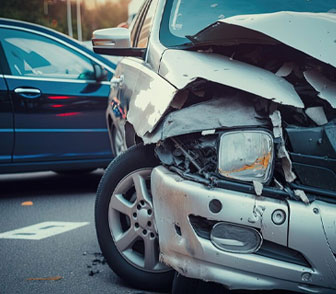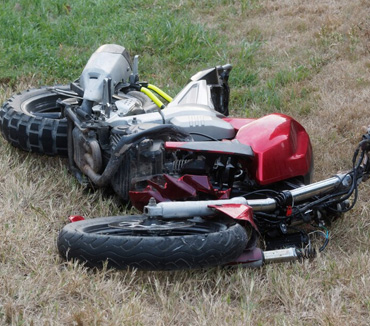How to Take Good Pictures After a Car Accident
In the moments after a car accident, the questions running through your mind include figuring out what happened and whether or not everyone is ok. After stepping out of your vehicle, you take in the scene, grab your insurance ID card from the glovebox and call the police. While you are waiting for the police to arrive, taking accident scene photos can be a huge help for making an insurance claim or building your legal case. However, you should only do this if you’re not physically injured and if the scene around the accident is safe enough for you to take pictures without putting yourself (or others) in danger.
The pictures you take at the scene of an accident can become an invaluable tool during the car insurance claims process. Most people have quick access to a camera, typically through a cell phone, and it can prove very helpful when preserving evidence immediately after a car accident. Pictures can tell a lot about what might have caused an accident and the resulting damages.
How Photographs Can Help
Taking photographs of the scene and other details surrounding the crash is a great way to preserve evidence. Besides eyewitness accounts and a police record, it might be the only reliable evidence that can be collected from the scene. Any photos you take will assist the insurance adjusters who are investigating your claim, and pictures of the accident scene will also be a big asset if a personal injury lawsuit is filed as a result of the accident. You might not know in the moment if you will make an insurance claim or pursue a lawsuit relating to the accident, but it is a good idea to collect as much evidence as possible, just in case.
Having your own photographs will also help if you end up being sued or if the other driver makes a claim against your insurance company. Even if you suspect that the collision was your fault, accident scene photography can show certain conditions that might lessen your liability.
In short, photos offer concrete proof of what the accident looked like in the moments after a collision, which makes them much more reliable evidence than eyewitness accounts.
- It Documents the Scene
During the claims process, your insurance company’s claims representative will gather as much evidence as possible to decide who caused the accident. They will review the police report, and possibly interview the drivers or other witnesses. If there are any discrepancies in this information, pictures can be an important tool.
- It Helps Determine What Happened
When managing an auto insurance claim, one important job of the claims team is trying to understand exactly what happened in the moments leading up to the accident. That includes finding out which driver was responsible for causing the collision to occur.
- It Helps Determine Fault
Determining fault dictates which driver’s insurance company will pay for the damages – including things like car repairs, medical bills and property damage. And whether or not you are at fault can impact your auto rates after the accident, too.
Any Camera Will Do
Keep in mind that you are simply trying to preserve evidence, so any type of device that takes pictures will suffice. Smartphone cameras have become increasingly sophisticated and often have a flash built in. A disposable camera is also an option. Whatever sort of camera or device you are using, if it has the ability to time/date stamp photos, be sure you have that function enabled.
Tips for Taking Accident Scene Photos
The best time to take photos of an accident is immediately after the crash, before police arrive. The closer you can capture the exact position of the cars and have your images document the specific conditions surrounding the collision, the more helpful your photos will be as evidence.
Here are a few tips to keep in mind as you take accident scene photos:
- Get an Overview of the Scene
If it is safe to do so, take a few steps back and shoot photos of the entire accident scene from several angles. Try to show the position of the involved vehicles as they relate to each other, to the roadway and any other objects (buildings, trees, guardrails, etc.) that might be relevant. Likewise, try to take photos of the scene that include skid marks, debris, broken glass, or other indicators of how the crash occurred or its aftermath.
- Take Photos from Different Angles and Distances
It’s best to take a wide variety of photos. Try to snap photographs from at least three different angles and distances. For close-up photographs, try to take the picture from a distance of one to five feet from the subject. Also take medium distance photographs (from 10 to 15 feet away) and long distance or panoramic photographs (from 20 or more feet away) when it is safe and makes sense to do so.
When taking pictures of vehicles and the surrounding area, try to keep a common landmark in each of the photographs in order to demonstrate distance and scale. Also be aware of sunlight and weather conditions and how those might affect your photographs, especially those relating to damage to your vehicle.
- Photograph Visible Damage to Each Vehicle
Walk around the perimeter of each vehicle and take close-up photos of dents, scratches, broken glass, deployed airbags, and other visible signs of damage. If it is safe to photograph the interiors of the cars, do that as well.
There might be property damage to items belonging to the drivers or passengers of the involved vehicles, and also external property. If there is any significant property damage to items in your car, they should be photographed so that you can add them to an insurance claim.
- People and Injuries
If you suffered any visible injury, be sure to document it through photos. If you are unable to take a picture yourself, ask someone else at the scene to do it for you. However, DO NOT take photos of someone else’s injuries, especially without their permission. If you are able to take photos of non-injured people for the purposes of later identification, that can be helpful. But certainly do not do this if including them in your accident scene photography is going to cause an argument or elevate tensions further.
- Document Weather Conditions
If it was raining or snowing and the roads are slippery, that might be a contributing factor. Or some car accidents happen because the sun blinded the driver, and that is also relevant. Your general overview photos might show the weather, but if you can take a few photos from the perspective of each driver’s relative position at the time of the crash, it might add some detail with respect to other weather factors.
- Document the Documents
Take photos of the other drivers’ licenses and registrations, along with any involved vehicles’ license plates. The police who respond to the scene should take notations of these documents, but it can only help you to have your own copy of this information. Even police officers are human and can make mistakes. One wrong digit written on a police report can be the difference between a successful insurance claim and an unsuccessful one.
Safety Always Comes First
When you are involved in an accident, the most important thing to remember is to stay safe. If you are injured, do what you need to do to take care of your injuries, or wait for emergency personnel to help you. If \ walking around and taking accident scene photos seems dangerous because you are lightheaded, unsteady on your feet or for due to traffic or any other danger, it is best to sit in a safe place and wait for help.
There are likely to be bystanders, police officers or perhaps uninjured passengers who can take photos if all other conditions are safe. If someone you do not know is taking pictures, give that person your phone number and email address so that they can send you the photos.
Should You Speak with an Attorney?
Thousands of people die in car accidents each year, which is why the damage sustained in these crashes should never be taken lightly. If you were harmed in a crash, your first step should always be to call 911 and ask for medical attention. Once you have been properly taken care of, make sure you contact an experienced personal injury attorney for help attaining justice and compensation for your injuries.
Call us now at 1-877-241-9554 to learn more about your options. A free consultation is just a phone call away.
Request A
Free Consultation
Fields Marked With An ” *” Are Required










